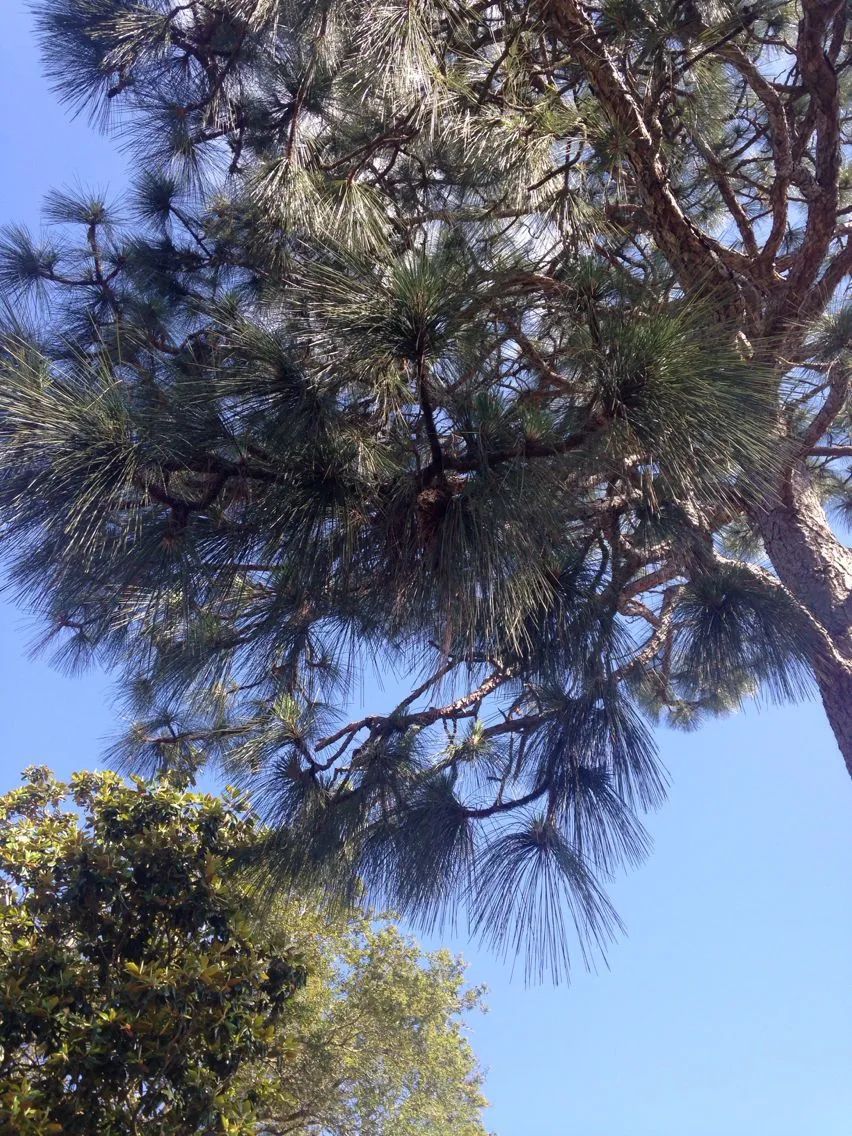
Author: Mill.
Bibliography: Gard. Dict. ed. 8: n.º 14 (1768)
Year: 1768
Status: accepted
Rank: species
Genus: Pinus
Vegetable: False
Observations: SE. U.S.A. to E. Texas
The Longleaf Pine, scientifically known as Pinus palustris, is a prominent tree belonging to the Pinaceae family. Described by the esteemed botanist Philip Miller in the 8th edition of the “Gardener’s Dictionary” published in 1768, this species has held significant ecological and economic importance in its native range.
Endemic to the southeastern United States, the Longleaf Pine spans from the coastal plains of Virginia down through Florida and westward to eastern Texas. This expansive habitat underscores the tree’s adaptability and resilience, thriving in sandy, well-drained soils often characterized by low fertility. The southeastern U.S. landscapes are dotted with these towering pines that can reach heights of 80 to 100 feet, becoming a dominant feature of the region’s ecology.
The Longleaf Pine is distinguished by its long, slender needles, which typically extend 8 to 18 inches, and its large, robust cones that can measure up to 10 inches in length. These notable characteristics not only aid in identification but also play crucial roles in the tree’s reproductive cycle. The pine’s long needles are grouped in clusters of three, which is a unique trait within the Pinaceae family.
Ecologically, the Longleaf Pine forests are renowned for their biodiversity. They provide habitats for a multitude of species, including the endangered Red-cockaded Woodpecker and the Gopher Tortoise. The open, park-like structure of these forests results in a unique ground layer comprising various grasses and herbaceous plants, contributing to the high biodiversity.
Fire plays a pivotal role in the life cycle of the Longleaf Pine. These trees have evolved to not only withstand but thrive following periodic fires, which help maintain their ecosystems. Fire reduces competition by clearing out underbrush and stimulating the growth of fire-adapted groundcover, ensuring the Longleaf Pine’s seeds have the best chances of germinating and growing.
Historically, Longleaf Pines were heavily exploited for their high-quality timber and resin, leading to significant reductions in their numbers. However, restoration and conservation efforts have been increasingly successful in recent years, aiming to restore these majestic trees to their former prevalence.
The Longleaf Pine stands as a symbol of nature’s resilience and the intricate balance of its ecosystems. With ongoing conservation efforts, future generations can continue to admire and benefit from this remarkable species, appreciating its ecological role and economic value within southeastern U.S. forests.
Eng: florida pine, georgia pine, longleaf pine, longleaf yellow pine, pitch pine, southern pine, southern yellow pine
Hun: floridai hosszútus fenyo
Ita: pino giallo, pino palustre
Deu: sumpf-kiefer, sumpfkiefer
Swe: långbarrig tall
Spa: madera pino
Fra: pin des marais, pitchpin du sud
Por: pinheiro, pinheiro-amarelo, pinheiro-breu, pinheiro-da-flórida, pinheiro-da-georgia, pinheiro-de-folha-longa, pinheiro-terebintina
Rus: сосна болотная (sosna bolotnaya)
Zho: 长叶松 (chang ye song)
En: Longleaf pine, Longleaf yellow pine, Pitch pine, Southern pine, Southern yellow pine, Long-Leaf Pine, Florida Pine, Georgia Pine
Bg: Блатен бор
Ca: Pi melis
Zh: Chang ye song, 长叶松, 长叶松 (chang ye song)
Cs: Borovice bahenní
Nl: Moerasden
Eo: Longfolia pino
Et: Pikaokkaline mänd
Fi: Pitkäneulasmänty
Fr: Pitchpin du Sud, Pin des marais
De: Sumpfkiefer, Sumpf-Kiefer
He: אורן הביצות
Hu: Floridai hosszútus fenyo
Is: Fenjafura
It: Pino palustre, Pino giallo
Ja: Daiōshō
Ko: 대왕소나무
Lt: Pelkinė pušis
No: Sumpfuru
Fa: کاج درازبرگ
Pl: Sosna długoigielna
Pt: Pinheiro, Pinheiro-amarelo, Pinheiro-breu, Pinheiro-da-flórida, Pinheiro-da-georgia, Pinheiro-de-folha-longa, Pinheiro-terebintina
Ru: Сосна болотная, Сосна болотная (sosna bolotnaya)
Es: Madera pino
Sv: Långbarrig tall
Zh-tw: 長葉松
Zh-hant: 長葉松
Taken Dec 25, 2019 by Kevin W (cc-by-sa)
Taken Jan 4, 2020 by Luke Luke (cc-by-sa)
Taken Dec 24, 2021 by James Harvey (cc-by-sa)
Taken Apr 22, 2021 by Otto (cc-by-sa)
Taken Dec 25, 2021 by shawn tid (cc-by-sa)
Taken Jan 5, 2021 by Lisa Tempesta (cc-by-sa)
Taken Jun 28, 2021 by christy osborne (cc-by-sa)
Taken Jan 17, 2016 by EOL − Damon Tighe (cc-by-nc)
Taken Jul 2, 2019 by Bruce Winter (cc-by-sa)
Taken Apr 27, 2004 by EOL − Lisa Kelly (cc-by-nc-sa)
Taken Sep 17, 2014 by EOL − doveman (cc-by-nc)
Taken Jun 23, 2013 by EOL − Kenneth Bader (cc-by-nc)
Taken May 19, 2015 by EOL − kenwoodelementary (cc-by-nc)
Taken Jan 1, 1900 by EOL − Chris M (cc-by)
Taken Dec 19, 2019 by Neli pot (cc-by-sa)
© copyright of the Board of Trustees of the Royal Botanic Gardens, Kew.
© copyright of the Board of Trustees of the Royal Botanic Gardens, Kew.
Taken Feb 1, 2021 by Shehadi Ramiz (cc-by-sa)
Taken Jun 29, 2020 by D Carty (cc-by-sa)
Taken May 20, 2022 by Chris Griggs (cc-by-sa)
Taken Jul 2, 2019 by Bruce Winter (cc-by-sa)
Taken May 7, 2015 by EOL − Ann Walter-Fromson (cc-by-nc)
Taken Apr 17, 1999 by EOL − Lisa Kelly (cc-by-nc-sa)
Growth form>: Single Stem
Growth habit>: Tree
Growth rate>: Rapid
Ph maximum: 7.0
Ph minimum: 6.0
Family: Myrtaceae Author: (F.Muell.) K.D.Hill & L.A.S.Johnson Bibliography: Telopea 6: 402 (1995) Year: 1995 Status:…
Family: Rubiaceae Author: Pierre ex A.Froehner Bibliography: Notizbl. Bot. Gart. Berlin-Dahlem 1: 237 (1897) Year:…
Family: Sapindaceae Author: Koidz. Bibliography: J. Coll. Sci. Imp. Univ. Tokyo 32(1): 38 (1911) Year:…
Family: Asteraceae Author: A.Gray Bibliography: Pacif. Railr. Rep.: 107 (1857) Year: 1857 Status: accepted Rank:…
Family: Fabaceae Author: Medik. Bibliography: Vorles. Churpfälz. Phys.-Ökon. Ges. 2: 398 (1787) Year: 1787 Status:…
Family: Aspleniaceae Author: (Cav.) Alston Bibliography: Bull. Misc. Inform. Kew 1932: 309 (1932) Year: 1932…